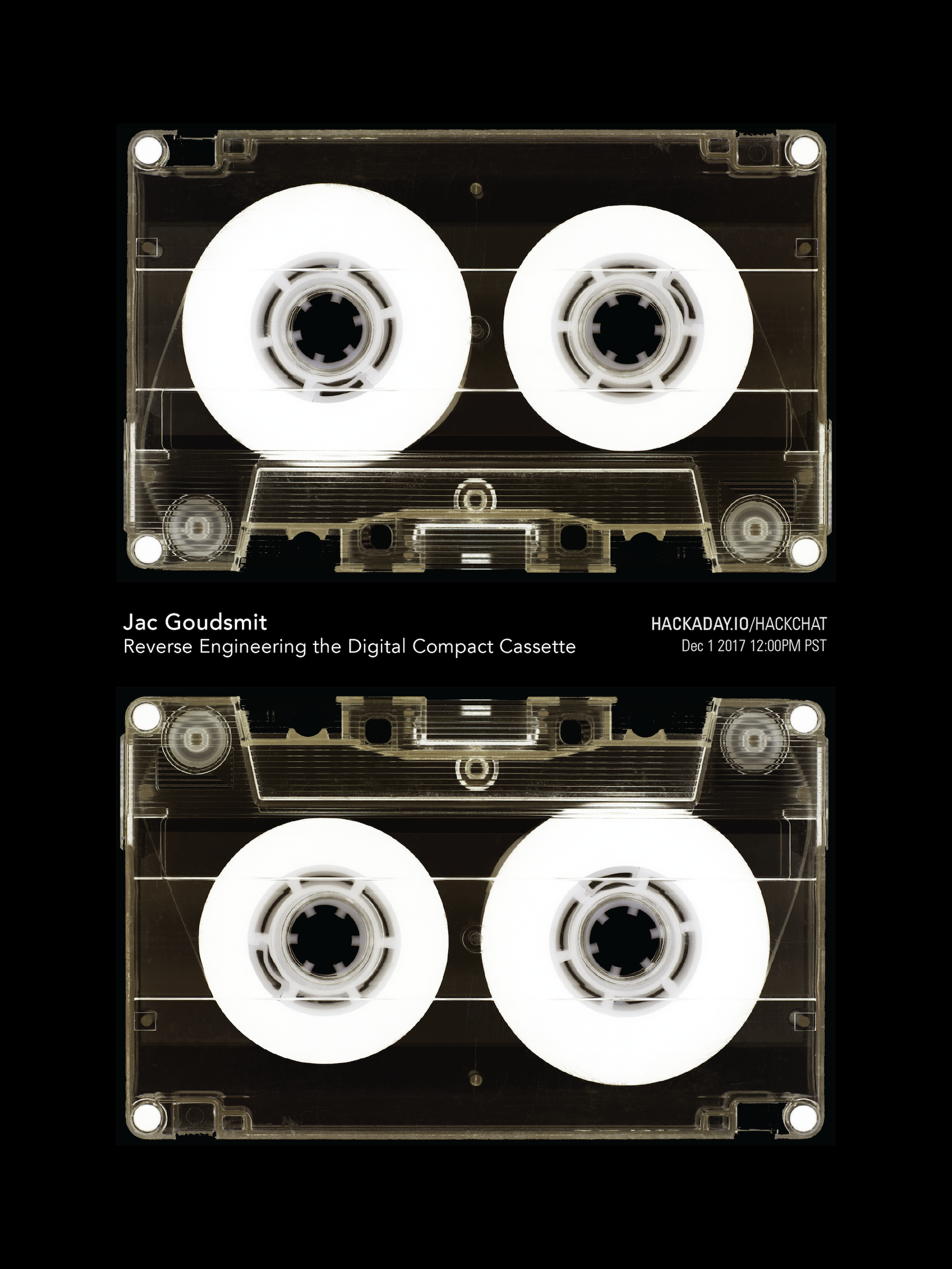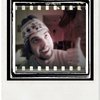Join this Hack Chat by clicking on the JOIN HACK CHAT button.
____________________________________________________________
Jac Goudsmit will be hosting the Hack Chat this week.
This Hack Chat is at noon PST, Friday, December 1st.
Time Zones got you down? Here's a handy count down timer!
This week, we're discussing reverse engineering the audio format of Digital Compact Cassettes and other retro and not-so-retro projects.
Digital Compact Cassettes is a magnetic tape sound recording format created by Philips and Matsushita in late 1992. It is backward compatible with all other cassette tapes that by design had the same form factor. The idea was that it would allow users to adopt digital recording using their otherwise obsolete music collections. Unfortunately, the DCC format was discontinued in 1996.
Our host, Jac Goudsmit, has been reverse engineering the audio format of digital compact cassettes. He has other retro computer projects like the L-Star, a make-your-own 6502 computer (and learn how it works).
Jac Goudsmit grew up in the Netherlands, and the first computer he ever used was a Commodore PET 2001, in around 1978. Here on Hackaday.io, Jac works on retro computer projects, software as well as hardware; original parts as well as emulation with FPGA: he maintains the P1V project, an implementation of the Parallax Propeller on several FPGA platforms.
He has a Bachelor's in Computer Science and worked on many different projects across a few industries. An interesting project was working on the application that allows audiologists to adapt hearing aids to the needs of patients at Philips Hearing Instruments. He has worked on motion control software for ASML (lithography equipment) and Assembleon (pick and place). He even worked at Radio Shack at some point!
TL;DR Jac will be discussing a wide range of topics:
- Differences between EE/CS careers in the Netherlands vs the USA
- Emigrating to the United States
- How did L-Star come about, and how does it work?
- History of Digital Compact Cassette
- Behind the screens of DCC: How a stereo digital PCM signal is recorded to tape
- DCC-secrets: What is ITTS? Some info about future hacking plans
Please add your questions in the comments of this page. (thanks @naturian for the suggestion!)




Did DCC use any techniques for error correction (e.g. to overcome tape drop-outs)?